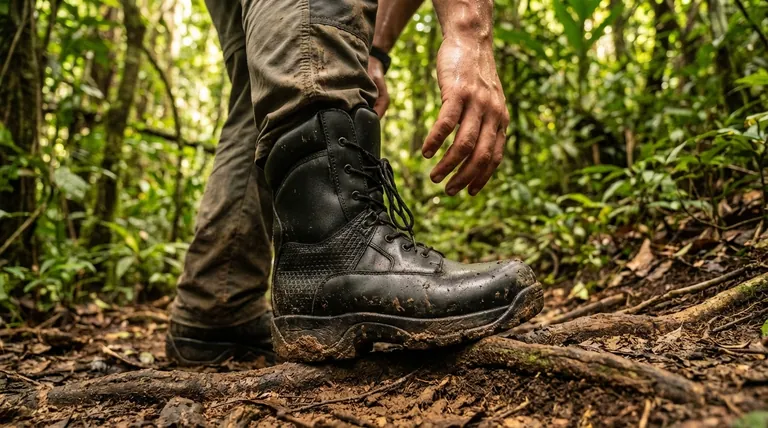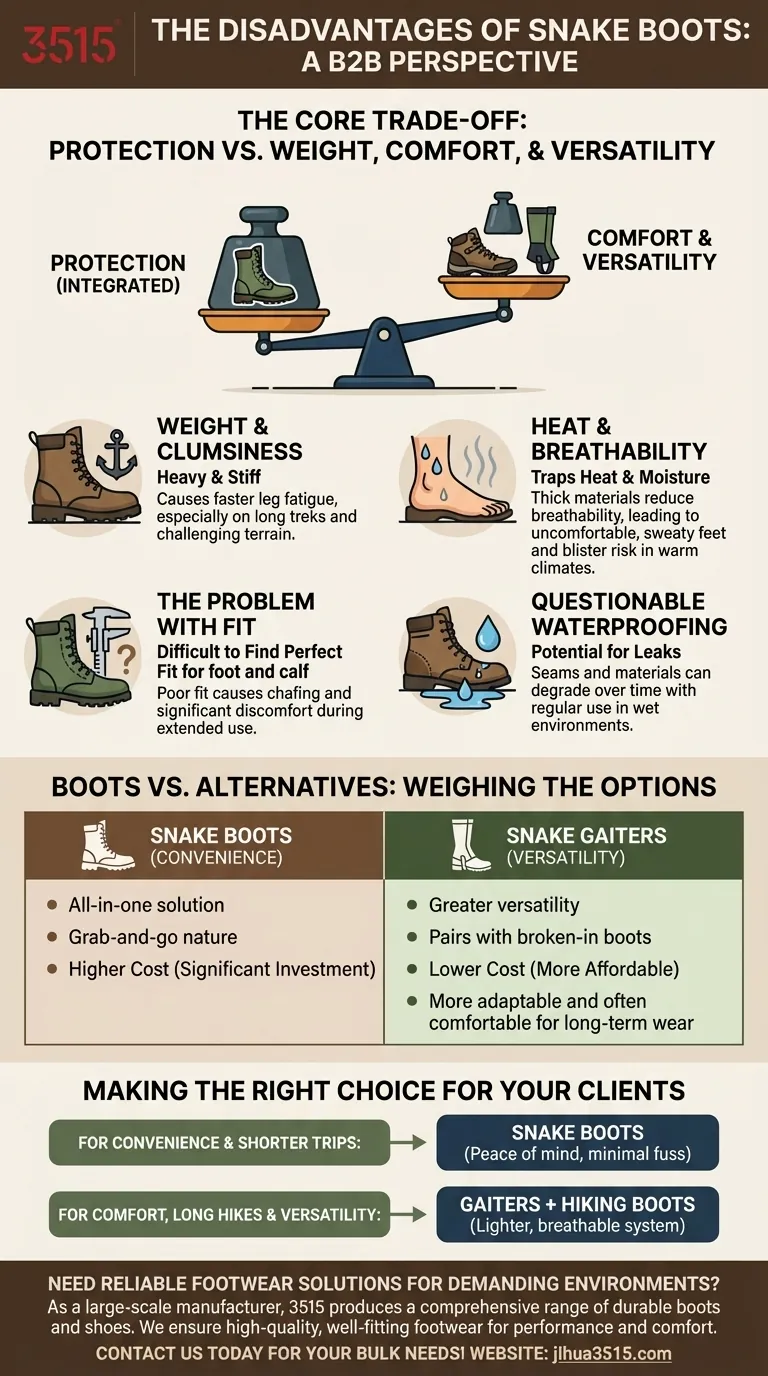While providing significant protection, snake boots are not without their faults. Their primary disadvantages are their considerable weight, which can cause fatigue on long treks, their higher cost compared to alternatives, and the difficulty in achieving a perfect fit, which can lead to significant discomfort.
The core trade-off with snake boots is choosing integrated, convenient protection at the cost of weight, comfort, and versatility for demanding outdoor activities.

A Closer Look at the Practical Drawbacks
Snake boots offer a simple, all-in-one solution for snakebite protection. However, this integrated design introduces several practical challenges that become apparent during extended use in the field.
Weight and Clumsiness
The robust materials required to stop a snakebite make these boots inherently heavy and stiff. This added weight contributes to faster leg fatigue, making them less ideal for long-distance hiking or covering challenging terrain.
Heat and Breathability
The thick, often waterproof materials that provide protection also trap heat and moisture. In warm climates, this lack of breathability can lead to sweaty, uncomfortable feet, increasing the risk of blisters.
The Problem with Fit
Finding a snake boot that fits both your foot and your calf perfectly can be difficult. A poor fit can cause chafing and discomfort, especially during long periods of walking, undermining the boot's usability.
Questionable Waterproofing
Even boots marketed as fully waterproof can develop leaks over time. With regular use in wet or swampy environments, seams and materials can degrade, diminishing their effectiveness at keeping your feet dry.
Understanding the Trade-offs: Boots vs. Alternatives
The decision to use snake boots often comes down to weighing their convenience against the flexibility and comfort of other protective systems, such as gaiters or chaps.
Cost Considerations
Snake boots are a significant investment and are typically more expensive than a quality pair of snake gaiters. This cost difference is a major factor for those who may only need snake protection occasionally.
Convenience vs. Versatility
The primary advantage of a boot is its grab-and-go nature. However, snake gaiters offer greater versatility, allowing you to pair snake protection with your preferred, broken-in hiking boots that are best suited for the terrain and your feet.
While some find gaiters or chaps cumbersome to put on, they provide a more adaptable and often more comfortable solution for long-term wear.
Making the Right Choice for Your Situation
Selecting the proper snake protection depends entirely on your specific activity, environment, and priorities.
- If your primary focus is convenience for frequent, shorter trips: A well-fitting pair of snake boots is an excellent all-in-one solution that provides peace of mind with minimal fuss.
- If your primary focus is comfort on long hikes and versatility: Pairing snake gaiters with your favorite hiking boots offers a lighter, more breathable, and often more comfortable system.
Ultimately, the best protection is the one you will consistently wear, so choose the option that best fits your activity and comfort needs.
Summary Table:
| Disadvantage | Key Impact |
|---|---|
| Weight & Stiffness | Causes leg fatigue on long hikes |
| High Cost | More expensive than alternatives like gaiters |
| Poor Fit & Comfort | Can lead to chafing and blisters |
| Low Breathability | Traps heat and moisture in warm climates |
| Questionable Waterproofing | May leak over time with heavy use |
Need reliable, comfortable footwear for demanding environments? As a large-scale manufacturer, 3515 produces a comprehensive range of durable boots and shoes for distributors, brand owners, and bulk clients. Our production capabilities ensure high-quality, well-fitting footwear designed for performance and comfort. Contact us today to discuss your specific needs!
Visual Guide

Related Products
- Premium Grain Leather Safety Boots for Bulk Supply
- Customizable Anti-Smash Safety Boots for Wholesale & Private Label Manufacturing
- Custom Wholesale Leather Safety Boots Direct Factory Manufacturing
- Premium Wholesale Waterproof Safety Boots High Performance Protection for Industrial Markets
- Premium Wholesale Wheat Nubuck Safety Boot with Rapid Lacing System
People Also Ask
- What does OSHA say about steel toe boots? A Guide to Compliant Footwear
- What is the difference between soft toe and safety-toe? Choose the Right Toe Protection for Your Job
- What boots do they wear on oil rigs? Essential Safety Footwear for Harsh Conditions
- Is safety-toe as good as steel toe? Choose the Right Protection for Your Job
- What is the OSHA standard for safety-toe boots? Ensuring Compliance and Worker Protection



















